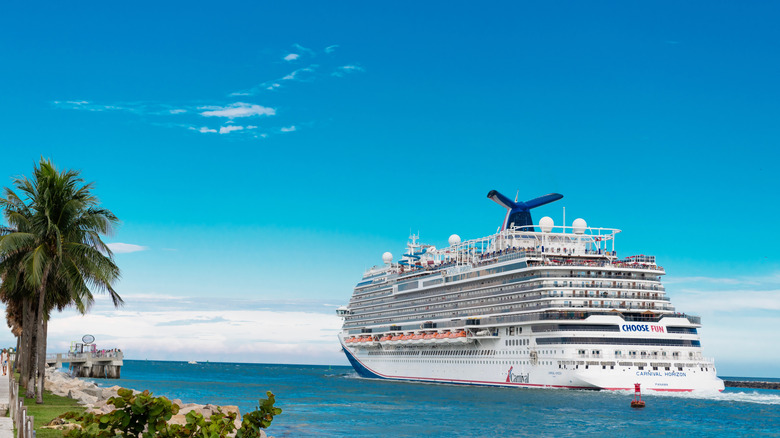Why Some Travelers Are Living On Cruise Ships Full-Time (And How Much It Really Costs)
For many people, a cruise is an escape from the mundanity of everyday life. There's nothing quite like boarding a ship for several days (or an entire week) and seeing exotic parts of the world. But what if you didn't have to go back home afterward? What if you could just take another cruise, and another, and keep going for as long as possible? What if you could live on a cruise ship?
At first, the prospect may seem way too expensive and complicated. However, some people have already made the switch, and it sounds like the costs can be comparable to what you might already be paying in rent, utilities, and other expenses. In some cases, you might actually save money by cruising full-time, although many variables can affect your bottom line.
If you've ever taken a cruise and wondered what life would be like if you never went home, here's your opportunity to break down the logistics of such a lifestyle change.
Breaking down the cost to live on a cruise ship full-time
Technically speaking, there are two ways to become a full-time cruise ship resident. The first is to pay for residency on a ship that caters to full-time residents. Two companies that offer this service are The World Residences at Sea and Villa Vie Residences. In both cases, onboard cabins are designed like floating condos, so you don't have to keep booking trips back-to-back. However, Villa Vie costs at least $129,000 annually, and residences on The World can cost a minimum of $2.5 million. At the time of this writing, Victoria Cruise Line is expected to launch in July 2025 and offer full-time living for about $2,500 per month.
The other option is to book back-to-back cruises throughout the year. As one cruise voyage ends, book another that starts in your port of call and hit the open ocean again. Typically, cruises last up to a week, so you would need to do that roughly 52 times per year. But the real obstacle is the monthly breakdown and finding the formula that keeps it from being more expensive than paying rent.
The website Cruise Plum allows you to compare rates with a helpful "per day" cost. On the low end, you can expect to pay around $100 per day, which would equal $36,500 for the year (roughly $3,000 per month). However, those costs depend on where you're cruising from (and to), the time of year (summer is peak cruising time when rates are higher), and the number of passengers. As you would expect, a solo traveler can pay much less than a couple or a family for a smaller cabin. But you can also save money with repeated bookings or sales deals, assuming that they work in your favor.
The pros and cons of full-time cruise ship living
If you're already itching to start living your best life on a cruise ship, there are many other factors to consider, and not all of them paint a pretty picture. Several unsettling reasons may have you avoiding cruising altogether, such as limited port access and the prospect of disease. Plus, you may have to follow some bizarre rules on a cruise ship, such as no homemade snacks or curling irons. It can also be difficult to put together a cruise itinerary that aligns so you can easily go from one ship to the next. Not to mention the fact that you have to get rid of your apartment or home, sell most of your possessions (or pay for a storage unit), and travel to a port city like L.A., New York, or Orlando.
There are some definite advantages of living on a cruise ship, and these are why some are turning to a life on the seas. A monthly rate of $3,000 may sound like a lot, but don't forget that cruises are all-inclusive. You don't have to worry about paying for utilities, car insurance, or groceries. In fact, if you book trips on one of the five cruise lines with the best food, you'll be eating like royalty practically every night. The only things you'll have to pay for are port fees, transportation, and spending money for each port destination.
Overall, for some people, the prospect of full-time cruising is appealing and relatively affordable enough to make the switch. As the cost of living continues to go up, with Statista reporting that the average new home in the U.S. costs over $500,000, and remote work becomes more widespread, the reality of living an endless vacation may become more mainstream.


